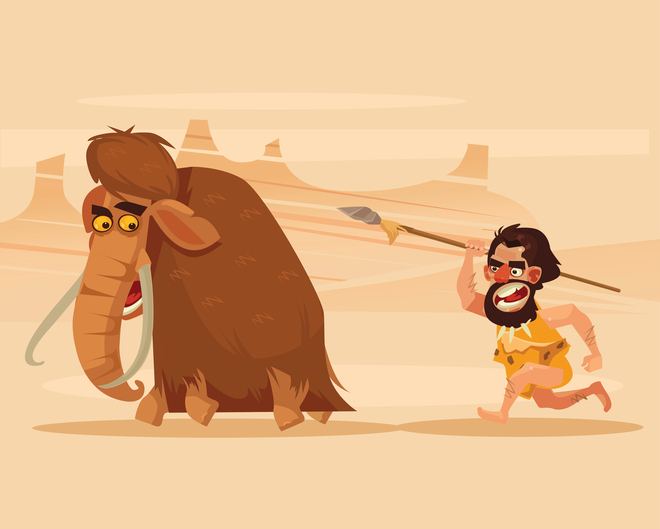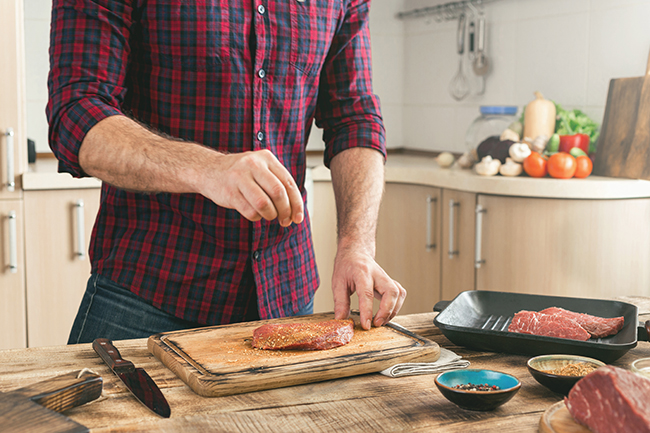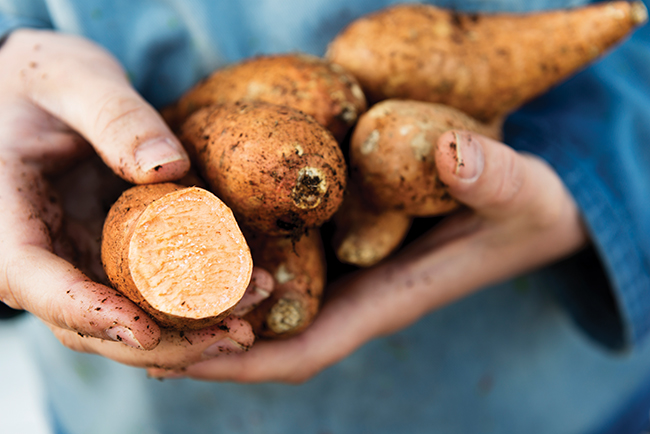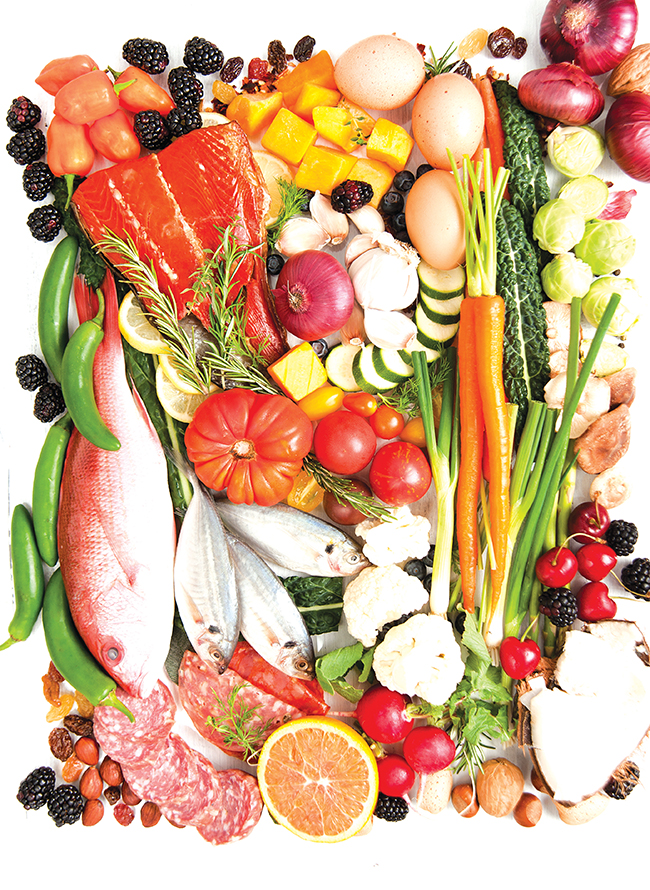Health and fitness professional Jo Searle shows us how to go back to our ancestral roots and eat the way we were biologically designed to…

The Paleo Diet has been one of the most popular diets in recent years, but why are so many people abandoning their usual diet regimes and opting for a way of eating that our ancestors followed centuries ago?
The Natural Body Blueprint explores what the Paleo Diet is, how it can help you and how much of what we’ve learned is not wrong.
What is your recommended food intake?
Years ago, we were encouraged to eat food groups based on the traditional food pyramid, which illustrated the basic principles of nutrition we should be adhering to in order to lead a healthy life, but this, and many other recommendations on diets and nutrition, have since been refuted.
What has now become constant chopping and changing between theories is leading many people to be confused about what nutritional choices they should be making in order to lead as healthy a life as possible and achieve their goals.
The original food pyramid suggested that carbs should form the main bulk of our daily intake and that we should be eating between six and 11 servings of starchy carbohydrates per day. It also stated that fruit should amount to between two and four servings, with vegetables coming in at between three and five servings and protein from meat, fish, eggs and nuts a mere two to three servings.

Almost 60 years after the launch of the food pyramid, the Department of Health replaced it with ‘The Healthy Plate’. It’s almost identical to the pyramid, except that the amount of fruit and the number of vegetables is now equal to the number of starchy carbohydrates. However, there is still disagreement about how many portions of meat and other non-dairy sources of protein should be eaten, as well as about food and drinks that are high in fat and/or sugar.
The new guidelines also state that a man should be eating 2500 calories a day and women should eat 2000. However, what this doesn’t take into account is that not all calories are created equal. Eating a day’s worth of calories in bread and pasta is not the same as eating 2000 calories’ worth of vegetables. And so there is still some confusion about the quantities of particular food groups to eat.
Many studies advocate a balanced diet of meat, vegetables and non-starchy carbs. This is where the Paleo Diet comes up trumps as a nutritionally dense diet.
What is the Paleo Diet?
The Paleo Diet isn’t, in fact, a diet as such; it should be seen as a lifestyle change rather than a fad or a short-term fix.
The Paleo Diet is based on how the average Homo sapiens ate before agriculture and marketing changed the landscape of the diet and the nutrition industry.
Over time, the industry lost its way on what was best for its consumers and instead, as we advanced and adjusted what we ate and the way we ate it, businesses capitalised on their consumers’ confusion; what should be consumed was replaced with what the corporate giants wanted to sell.

It’s thought that our bodies haven’t ever really adjusted to eating a diet high in grains, sugars and other food groups that are neither natural to us nor something to which we were ever historically exposed. In addition, we were told that fats are bad, and so low-fat options took over the shelves. However, fat adds a lot of flavour to foods, so whenever this macro-nutrient was removed (in order to make low-fat options), something else had to be put in its place to make the food taste good and for consumers to buy it; enter sugar, preservatives and chemicals. The sugar industry is a multi-billion-pound industry and it has made fat the enemy when in fact it is needed for the normal functioning of our bodies.
The Paleo Diet is the opposite of what you may have heard is best for you in the past; it’s a diet that’s high in naturally occurring foods, low in sugar and high in carbs from vegetables, protein from meat and fish and healthy fats.
In short, the Paleo Diet is encouraging us to go back to how we’re biologically designed to eat, with food that is nutritionally dense and easier to digest.
What can you eat on the Paleo Diet?
The Paleo Diet is not a restrictive diet, and it does not focus on low carbs and high-fat content like the ketogenic diet either. Primal eating encourages carbs – just not as you know them. You will get your carbs from vegetables and sweet potatoes, not grains.
If you follow the Paleo Diet, your plates will likely be filled with anything that a caveman would eat. Your hunter-gatherer instinct will be satisfied by eating things like meat, fish, nuts, seeds and lots of vegetables.

Simply, if it’s processed or made from grain, you can’t eat it. With that, you can expect to say goodbye to pasta, crisps, cereal and quinoa.
What are the health benefits of the Paleo Diet?
The Paleo Diet really gets you thinking about what you’re eating. It’s not about counting calories; it’s about eating nutritionally dense food that will give you energy, fuel your body and keep you full and satisfied.
Because it features only naturally occurring foods, the Paleo Diet actually encourages you to cook from scratch. Fresh cooking also helps to pack in plenty of nutrients with a foodie lifestyle that also encourages fat consumption, which has previously been shunned. Eating in this way can help you to lose weight and build muscle.
Why can’t you eat grains?
Grains are arguably healthy, especially ones like quinoa, but over-consuming them can mean that the body converts the complex carbs into sugar, which can then be stored as fat.
Grains also contain gluten and lectins. Gluten, as we know, is the protein found in wheat; it acts as a glue that holds food together. Lectin is a natural toxin that is sugar-binding and commonly found in legumes and grains.
Both can cause damage to the body if over-consumed, or in some cases – those with gluten intolerances – consumed at all.
An intolerance to gluten can cause digestive problems, joint pain, acid reflux and more, including affecting your energy. Lectins can prevent the gastrointestinal tract from repairing itself. Essentially, our bodies don’t process grains well and this can impact our day-to-day health.
The Paleo Diet eradicates grains and is therefore a gluten-free diet; it also almost eliminates sugar, so your energy levels should stabilise and your digestive system should perform better once you’re on it.
In a nutshell, you can eat the following foods on a paleo diet:
- Fruits
- Vegetables
- Meat
- Seafood
- Nuts and seeds
- Healthy fats
Foods to avoid include:
- Dairy
- Grains
- Legumes
- Starches
- Processed food = sugars
- Alcohol
The final word
The health benefits of going primal are clear to see and, even if you’re unsure about switching to the Paleo Diet, the positives, such as reducing body fat, stabilising sugar levels and weight, increased concentration, improved digestion and amplified energy levels, mean that our ancestors may have been right all along and the caveman diet is the way to go.
About The Author
 Joe Searle is a health and fitness professional and has been working in the industry for over 5 years, helping busy professionals lose weight and stay healthy in just 20 minutes a day. For more info, visit www.peakperformancerehab.co.uk.
Joe Searle is a health and fitness professional and has been working in the industry for over 5 years, helping busy professionals lose weight and stay healthy in just 20 minutes a day. For more info, visit www.peakperformancerehab.co.uk.
